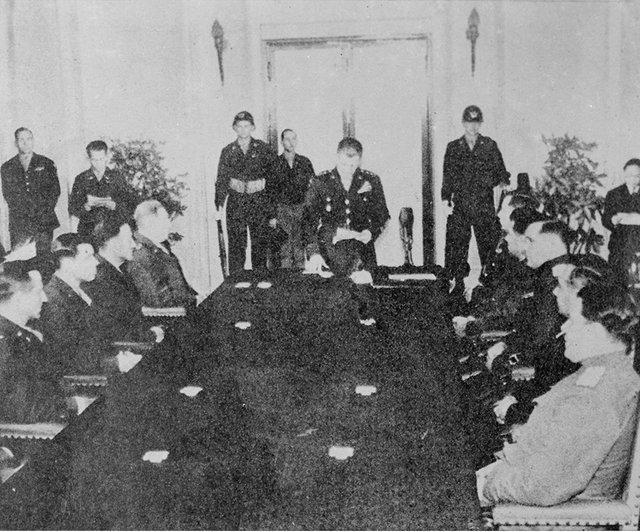Prof. Kathryn Weathersby

In the last post we saw that in 1946/47 the United States assumed responsibility for resisting Soviet expansion in the eastern Mediterranean. But if it was to carry out this new job, Congress would have to appropriate the necessary funds. In the midterm elections of 1946 the Republican party gained control of Congress for the first time since the 1930’s, campaigning on a promise to reduce the size of government after its expansion during the war. Therefore, President Truman had to persuade reluctant congressmen that they should use taxpayer money to protect people far from the US who were fighting in causes few Americans knew about or cared about.
In this difficult political situation, Truman decided to appeal to American principles. In his speech to a special joint session of Congress on 12 March 1947 the president declared not just that Americans must aid the people of Turkey and Greece, but that the United States must make a broader commitment to “support free peoples who are resisting subjugation by armed minorities or by outside pressures,” which came to be called the Truman Doctrine.
The president’s strategy worked. Congress quickly appropriated $250 million for Greece and $150 million for Turkey, setting a precedent for assistance to other countries that were considered vulnerable to Soviet intimidation or internal communist uprising. The State Department’s newly created Policy Planning Staff then worked out a policy context within which this principle would be applied. In July 1947 its director, former ambassador to Moscow George F. Kennan, made this new concept public in an article in the influential journal Foreign Affairs titled “Sources of Soviet Conduct.” Writing under the pseudonym “Mr. X,” Kennan explained that the Soviet Union was probing weak spots all along its vast border because it sought to guarantee its security by expanding its power into neighboring territories, either by outright annexation or by installing subservient governments along its periphery.
“Mr. X” went on to explain that since the great powers that had previously restrained Russian expansionism – Germany, Japan, and Great Britain – were no longer able to do so, it was up to the United States to fill their role. The US would not use military force for this purpose, however. Its army was being demobilized, as the country returned to its traditional practice of not maintaining a large standing army in peacetime. Instead, the US must use its economic and political resources to promote prosperity and stability in the states along the Soviet periphery. Kennan asserted optimistically that Moscow would then be forced to limit its expansion to the borders agreed to during wartime allied negotiations.
How would containment be carried out on the Korean peninsula? The situation there was clearly quite different from the crisis in Turkey. There was not yet a Korean government for Moscow to threaten. Instead, Soviet military forces were occupying the northern half of the country and were refusing to cooperate to create a new government for Korea, at least one that was not exclusively communist. The US still had a formal commitment to work with the Soviets in the Joint Commission, but while its meetings were suspended, the US would try to create favorable conditions in the South by sending economic and technical assistance.
Thus, Secretary of State Dean Acheson confirmed to Congress during Senate hearings on aid to Greece that the administration was considering sending $200 million in aid to Korea over the next three years. If this aid results in the creation of a viable government in Seoul, American forces could withdraw without leaving the peninsula vulnerable to Soviet domination.
In the next post we will look at how American ideas about the Korea situation continued to evolve in 1947, including the proposal to turn the issue of a new government over to the United Nations.
[This post relies on James Matray, The Reluctant Crusade: American Foreign Policy in Korea, 1941-1950 (University of Hawaii Press, 1985)]
The Truman Doctrine where they “support free peoples who are resisting subjugation by armed minorities or by outside pressures,” can be re-evaluated for today's situations and the position the United States should take in outside conflict.
Downvoting a post can decrease pending rewards and make it less visible. Common reasons:
Submit
Unpaid related articles
Related articles
Interesteem(@interesteem) is a service that recommends related articles using DeepLearning.
Please write an article with #interesteem tag.
Downvoting a post can decrease pending rewards and make it less visible. Common reasons:
Submit